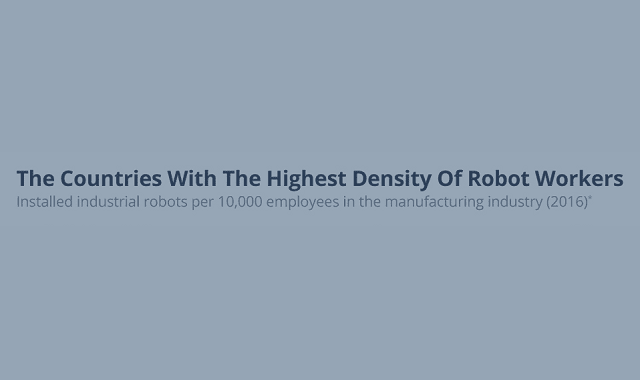“Robot density is an excellent standard for comparison in order to take into account the differences in the automation degree of the manufacturing industry in various countries,” says Junji Tsuda, president of the IFR. “As a result of the high volume of robot installations in Asia in recent years, the region has the highest growth rate. Between 2010 and 2016, the average annual growth rate of robot density in Asia was nine percent, in the Americas seven percent, and in Europe five percent.”
Breaking those numbers further down by countries, South Korea had the largest installation of industrial robots per 10,000 employees in 2016, reaching 631. South Korea’s electrical, electronics, and automotive sectors have all contributed to this high installation volume.
Singapore comes in second, with 488 units. “About 90 percent of robots are installed in the electronics industry in Singapore,” according to the IFR.
Germany (309 units) and Japan (303 units) ranked third and fourth, respectively.
You can see how the top 15 countries stack up in the chart below, provided by Statista.

Infographic by: www.statista.com
Breaking those numbers further down by countries, South Korea had the largest installation of industrial robots per 10,000 employees in 2016, reaching 631. South Korea’s electrical, electronics, and automotive sectors have all contributed to this high installation volume.
Singapore comes in second, with 488 units. “About 90 percent of robots are installed in the electronics industry in Singapore,” according to the IFR.
Germany (309 units) and Japan (303 units) ranked third and fourth, respectively.
You can see how the top 15 countries stack up in the chart below, provided by Statista.

Infographic by: www.statista.com

